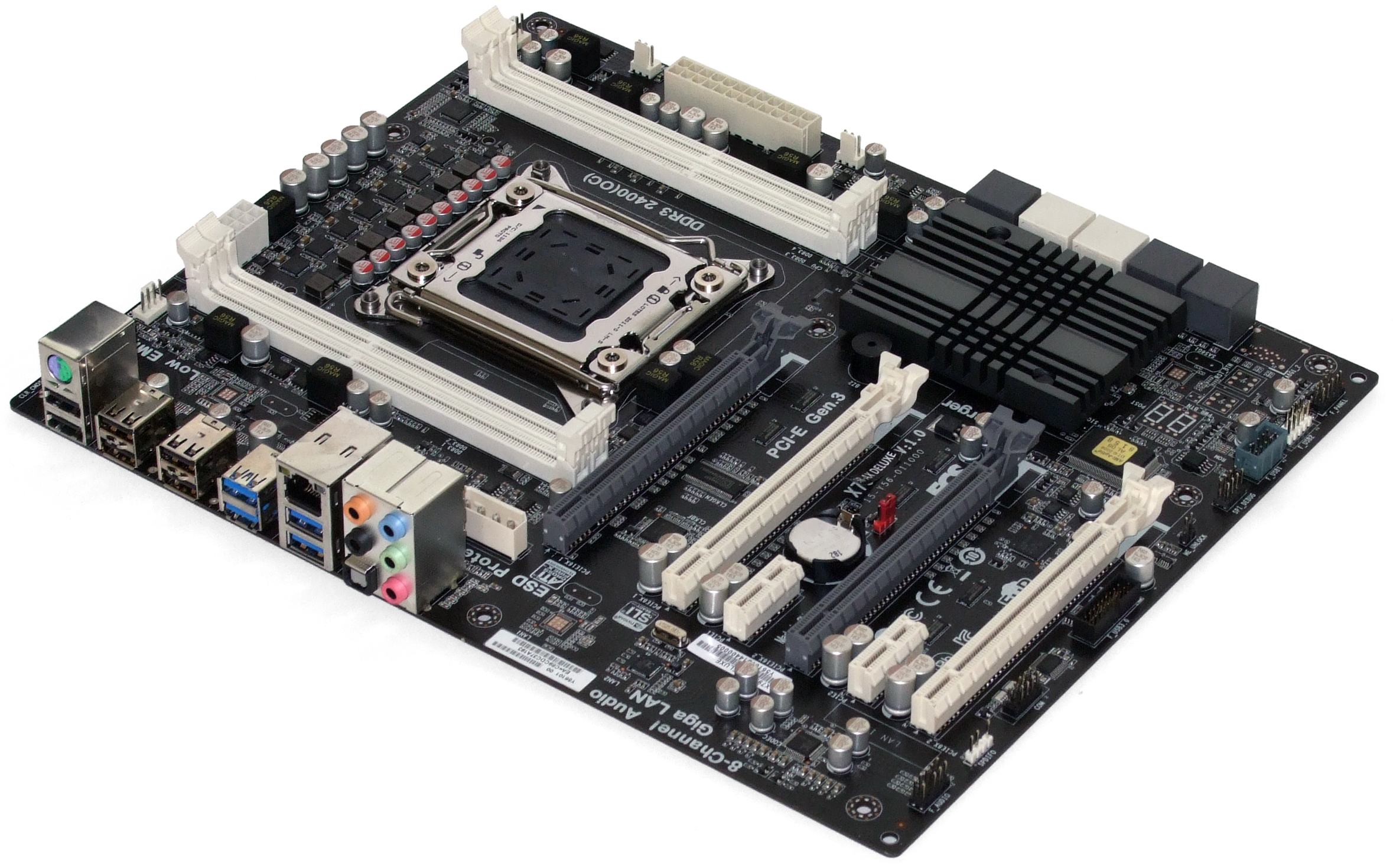Six $200-$260 LGA 2011 Motherboards, Reviewed
We know that Intel's X79 Express platform hosts the fastest desktop processors in the company's portfolio. But can it be made more affordable? We round up the least-expensive $200-$260 motherboards to determine how much you have to give up for cheap X79.
ECS X79R-AX Black Deluxe
ECS' X79-based branding is a little strange. Its “Black Extreme” moniker applies to a high-end part labeled X79R-AX, while its “Black Deluxe” moniker goes to the mid-range part officially called the X79R-AX Deluxe. Those official names come from both the company's Web site and the descriptor labels applied to its boxes. In other words, the Deluxe is a lower-end model than the non-Deluxe, and the word Extreme rarely appears on the top-end variant. In order to keep things simple, we’re ignoring the word Black and going by the label’s official X79R-AX Deluxe designator.
Deluxe could refer to the board’s support for four graphics cards, its four rear and two front-panel USB 3.0 ports, or perhaps its quad SAS 6Gb/s connectors. Two of those features are unique amongst today's contenders.
Pathway switches allow the X79R-AX Deluxe to go from two full-bandwidth PCIe 3.0 x16 links to four x8 connectors by sending eight of each grey slot’s lanes to the corresponding white slot. That only happens when the switches detect a card in the white slot, though.
Of course, four-card arrays aren't for everyone, and they may not even be for anyone shopping in the X79R-AX Deluxe's price range. They certainly can't be used if you also want front-panel USB 3.0 support, since the front-panel header is placed too closely to the fourth graphics slot for a card and a cable to coexist. Three-way CrossFire is still a solid possibility, but the slots are most suitably situated to support two really big graphics coolers.
The CPU’s remaining eight lanes of third-gen PCIe are reserved for on-board devices, with four of them providing a communications pathway for the PCH's SAS controller. These are the same ports Intel decided to disable on desktops, and ECS was the only manufacturer to enable them anyway. These must be enabled in both firmware and by Intel drivers supplied by ECS. Mixed tales of triumph and tragedy have been attributed to the use of these ports, and the tragedies are mostly likely related to the fact that Intel decided not to support them.
In the days to come, Intel will introduce the server/workstation version of this same PCH, which will be largely identical to the desktop version, aside from its name. That'll be the product to look to for official Intel SAS support.
The X79R-AX Deluxe officially supports six drives and actually includes six SATA cables. ECS adds a single SLI bridge. You'll need to look to your graphics vendor for a CrossFire bridge.
Get Tom's Hardware's best news and in-depth reviews, straight to your inbox.
Current page: ECS X79R-AX Black Deluxe
Prev Page TPower X79 Firmware Next Page X79R-AX Deluxe Firmware


